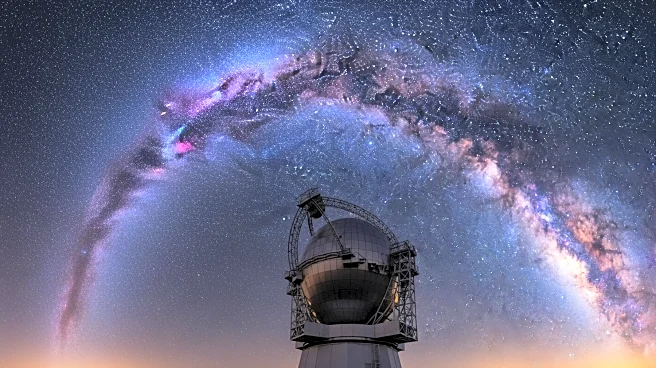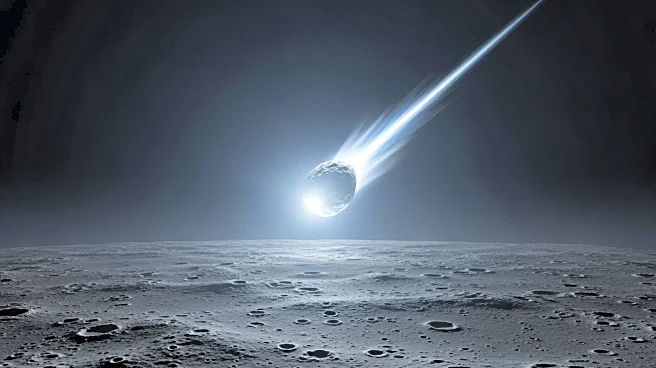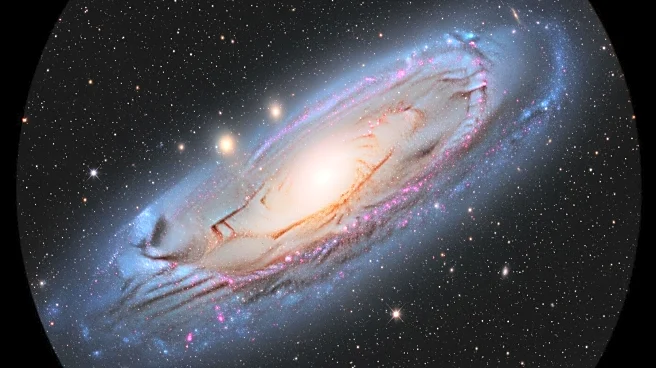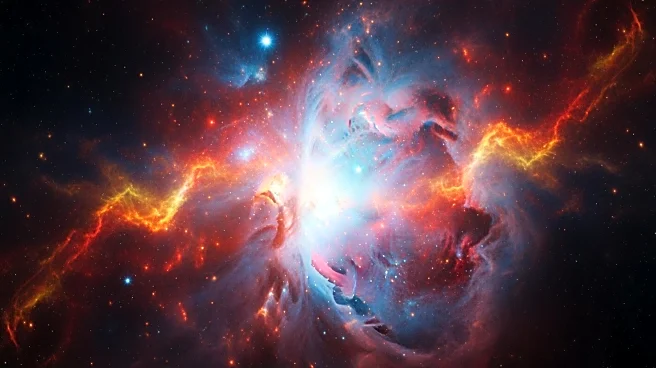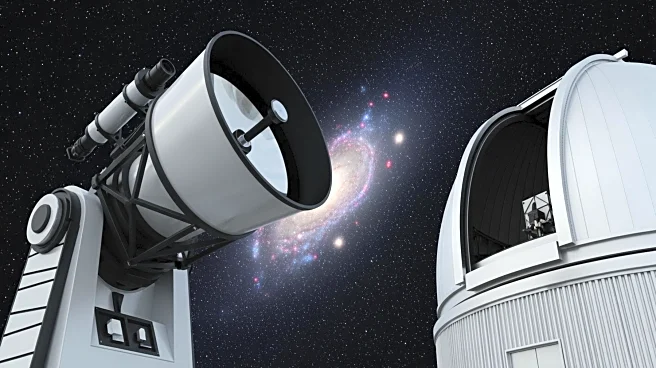What's Happening?
A striking image of the gibbous moon was captured by Petr Horálek of NOIRLab in the Atacama Desert, Chile. The photograph showcases the moon during one of its brightest phases, providing extended natural
light at night. This phase, known as the gibbous moon, occurs when the moon is more than half illuminated but not yet full, or just after full when it begins to wane. The image highlights two significant lunar features: Mare Tranquillitatis and Mare Serenitatis, which are remnants of the moon's volcanic past. These maria are historically important as they are part of humanity's legacy of lunar exploration.
Why It's Important?
The gibbous moon phase is crucial for astronomers and stargazers as it offers excellent visibility for observing lunar craters and highlands. This natural illumination aids in the study of lunar features, contributing to our understanding of the moon's geological history. The captured image not only serves as a visual treat but also underscores the importance of astronomical observatories like the Very Large Telescope (VLT) and Atacama Large Millimeter/submillimeter Array (ALMA) in Chile, which are instrumental in advancing space research. The photograph is a reminder of the moon's role in both scientific exploration and cultural symbolism, representing growth and transition.
What's Next?
The continued observation and study of the moon during its various phases will enhance our understanding of its surface and geological history. As technology advances, astronomers can expect to gain more detailed insights into lunar features, potentially leading to new discoveries about the moon's formation and evolution. The observatories in Chile will likely continue to play a pivotal role in these studies, contributing valuable data to the global scientific community.
Beyond the Headlines
The image of the gibbous moon captured in the Chilean Andes highlights the intersection of natural beauty and scientific inquiry. It serves as a reminder of the cultural significance of the moon, which has been a symbol of cycles and change throughout human history. The photograph also emphasizes the importance of preserving dark sky sites like the Atacama Desert, which are essential for astronomical research and offer unique opportunities for public engagement with science.


